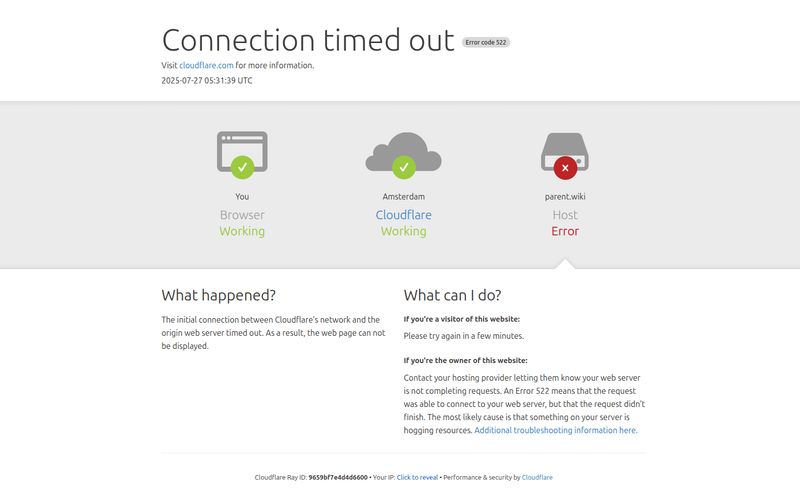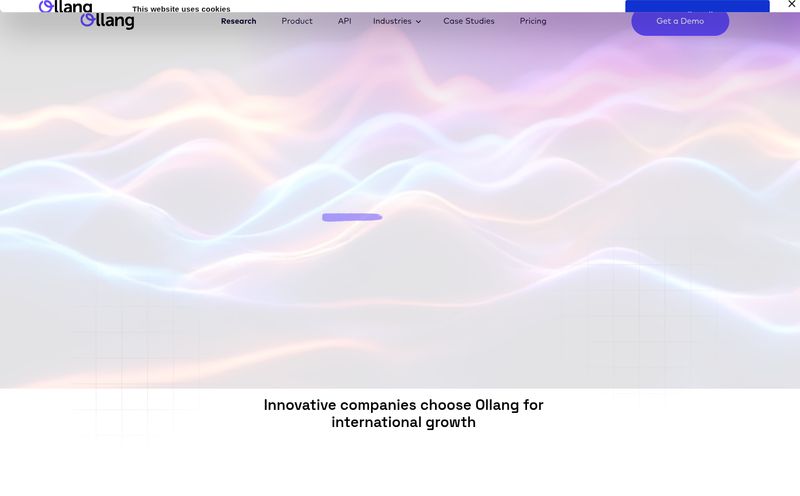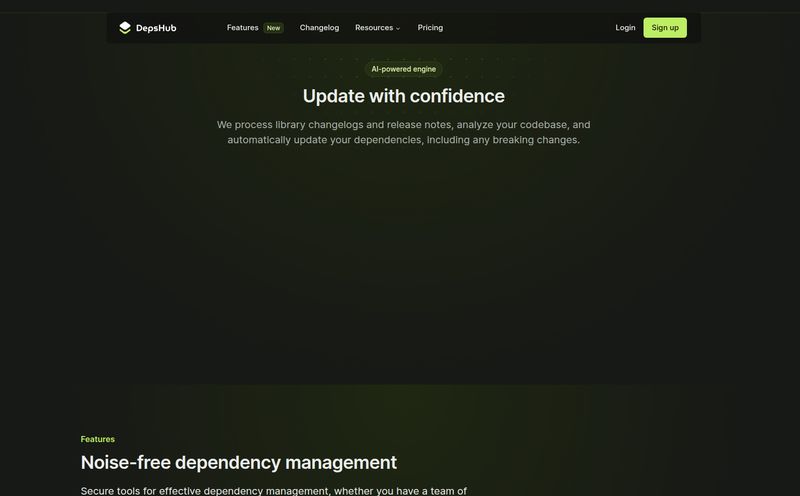If you're in marketing, growth, or a founder, you've probably felt the pain. That sinking feeling when you need a critical piece of data—say, the lifetime value of customers acquired through your latest Facebook campaign who also used a discount code—and you realize it's buried deep inside a production database. Your next step? Filing a ticket with the engineering team and hoping they get to it before the heat death of the universe.
I've spent more hours than I care to admit trying to duct-tape together spreadsheets and wrangle Google Data Studio (now Looker, I guess) just to get a simple report. It often feels like you need to be a data scientist just to figure out if your ads are working. For years, we've been promised tools that would democratize data. Most have fallen short.
So, when I stumbled upon Querio, my professional skepticism was cranked to eleven. Another AI-powered platform promising to make data easy? Sure. But the more I looked, the more I felt that familiar tingle of excitement. Maybe, just maybe, this one is different.
What Exactly Is Querio Anyway?
In the simplest terms, Querio is an AI that acts as a translator between you and your data. It’s a native Business Intelligence (BI) platform that connects directly to your data sources—your app's database, HubSpot, your data warehouse, you name it—and lets you ask it questions in plain English. No SQL, no Python, no Excel wizardry required.
Think of it less like a complicated dashboard tool and more like having a junior data analyst on your team 24/7. You just type a question, like, “What were our top 10 selling products in Germany last month?” and it gives you the answer. It’s a pretty compelling idea, especially for those of us who would rather spend our time acting on insights instead of digging for them.
Ditching the Data Janitor Work: How Querio Actually Works
The core magic of Querio is its conversational interface. The homepage says it best: “You prompt, Querio answers.” This isn't just marketing fluff; it’s the entire user experience. You connect your data, which they claim is a secure and direct process, and then you start asking questions. It’s designed to understand your data's context, your metrics, and what you’re trying to learn.

Visit Querio
For a lot of teams, this completely removes the data bottleneck. The marketing manager doesn’t have to wait for the data team to build a new report. The CEO can check daily revenue on her own. The product team can explore user behavior without writing a single line of code. This is the stuff we've been dreaming about. It's about moving from being a 'data janitor' to a data-informed strategist. A huge difference.
The Features That Made Me Look Twice
Look, a simple Q&A is cool, but for a tool to be worth its salt, it needs more. Querio seems to understand this.
Beyond 'What' to 'Why' with AI Analysis
One of the things that really caught my eye was the claim that it helps you understand the “Why”, not just the “What”. This is a subtle but massive distinction. Getting a report that says “sales are down 15%” is one thing. That's the 'what'. But an AI that can dig a little deeper and suggest that sales are down because a recent app update is causing checkout failures for Android users? That’s the 'why'. That's actionable. It’s the difference between a thermometer and a doctor.
Dynamic Dashboards That Don't Require a PhD
I’ve built my fair share of dashboards, and it’s rarely a simple task. Aligning boxes, fighting with data source connectors, writing custom formulas... it’s a chore. Querio creates dynamic dashboards and reports from your conversations. The idea is that as you explore the data through prompts, you can pin the most important findings to a live dashboard. This feels much more organic than the traditional, rigid process of building a dashboard from scratch.
Connecting Where Your Data Already Lives
The platform stresses that it can connect directly and securely to where your data already is. This is important. You don’t want to be messing around with complicated ETL (Extract, Transform, Load) processes if you can help it. By plugging directly into sources like Postgres, MySQL, Snowflake, and even CRMs like HubSpot, it reduces a significant amount of the initial setup headache that plagues other BI tools.
Who Is This Really For? (Hint: Probably You)
While a tool this powerful could be used by anyone, I see a few groups getting a ton of value here:
- Marketing & Growth Teams: Finally, an easy way to measure campaign ROI, user funnels, and channel performance without begging the engineering department for help.
- Founders & Executives: Get a real-time pulse on your business's most important KPIs without filtering through a dozen spreadsheets.
- Product Managers: Understand feature adoption, user segmentation and churn by asking direct questions about user behavior.
- Operations & Finance Teams: Streamline reporting and financial analysis by querying databases directly.
Heck, I even think data teams could get value out of this. It could handle all the “simple” ad-hoc requests that eat up their day, freeing them up to work on more complex, deep-dive projects.
Let's Talk Money: Querio's Pricing Explained
Alright, this is where the rubber meets the road. Querio is not a budget tool, and it's not trying to be. It's positioned as a premium solution for serious teams. Here’s a quick breakdown of their plans based on the site:
| Plan | Price | Best For |
|---|---|---|
| Standard | $1100 / month | Data teams that need scaling dashboards. |
| Pro | From $2000 / month | Data-driven organizations scaling analytics. |
| Enterprise | Let's Talk (Custom) | Regulated or large-scale operations. |
Now, before you get sticker shock, there’s something incredibly unique about their model. Every single plan starts with a mandatory 1-month free guided pilot. I love this. It shows a massive amount of confidence in their product. They literally say, “We do not want you paying a single cent for a product that you do not get value from.” That's a bold stance, and frankly, it’s refreshing. They also have a special program for startups that have raised less than $3 million, which is a nice touch.
The Not-So-Shiny Bits
No tool is perfect, right? Even with all the excitement, I can see a couple of potential hurdles. First, while they say “no extra setup,” connecting to a database always has some level of configuration. You'll still need credentials, permissions, and maybe some chats with your dev team. It's easier than the alternative, but not quite magic.
Second, you are placing a lot of trust in the AI agent's accuracy. What if it misinterprets your prompt? A poorly phrased question could lead to a misleading answer. There's a learning curve to figuring out how to “talk” to the AI to get exactly what you need. And lets be real, the price puts it out of reach for solo founders or very small businesses. This is an investment for teams that are serious about data.
My Final Verdict on Querio
So, is Querio the future of business intelligence? I think it’s a very strong contender for what that future looks like. It’s tackling the single biggest problem in data analytics: the user interface. By making the conversation the interface, it opens up powerful capabilities to a much wider audience.
It’s not for everyone. If you’re a bootstrapped startup or a solo blogger, it’s probably overkill. But if you’re part of a team that constantly feels like it's flying blind, waiting on data reports that are outdated by the time they arrive, Querio could be a genuine game-changer. That mandatory free pilot makes it a pretty low-risk proposition to find out for yourself.
For me, I'm optimistic. Anything that gets us out of spreadsheets and closer to actual insights is a win in my book.
Frequently Asked Questions about Querio
- What is Querio in simple terms?
- Querio is an AI platform that lets you ask questions about your business data using plain English. It connects to your data sources and gives you answers, reports, and dashboards without you needing to write any code like SQL.
- Do I really need to know SQL to use Querio?
- Nope. That's the main selling point. It's designed specifically for non-technical users like marketers, managers, and founders to get data insights on their own.
- What kind of data sources can Querio connect to?
- It can connect to a variety of sources, including common databases like PostgreSQL and MySQL, data warehouses like Snowflake, and business applications like HubSpot.
- Is there a free trial for Querio?
- Yes, and it's a unique one. Every plan comes with a mandatory 1-month free guided pilot. Their team helps you connect your data and prove the tool's value before you ever pay.
- How is Querio different from tools like Tableau or Looker Studio?
- The main difference is the interface. Traditional tools are about dragging and dropping to build charts. Querio is about having a conversation. You ask questions in a search bar, and the AI generates the analysis for you, which is a faster and more intuitive process for many people.
- Is Querio secure to use with my company's data?
- Security seems to be a major focus. They talk about direct, secure connections and offer features like self-hosting and SOC 2 audit reports for Enterprise clients, which indicates a strong commitment to data protection.
Conclusion
The quest for truly accessible data is a long one, but tools like Querio represent a massive leap forward. By focusing on natural language as the interface, it breaks down the walls that have traditionally kept valuable insights locked away from the people who need them most. While it's a premium tool for serious teams, its unique pilot program makes it an intriguing option for any company ready to stop guessing and start knowing.



